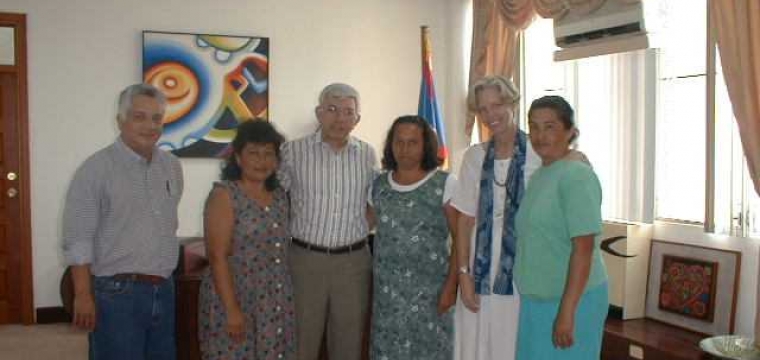The establishment of the El Pilar Archaeological Reserve for Maya Flora and Fauna launched an extensive, interdisciplinary program aimed at developing the site as a model research and educational destination in the Maya forest. Essential to this endeavor is the fostering of a strong ethic of environmental stewardship among the citizens of the gateway towns and villages in Cayo, Belize, and Melchor, Peten. Members of the binational community benefit from sponsored presentations on archaeological research, eco-tourism opportunities, native plant uses, and the development of cottage industries. Additionally, we promote the integrated study of economic botany with Grinnel College, University of Connecticut, and the New York Botanical Garden.
In 1993 the local villagers established their first community organization, Amigos de El Pilar (AdEP). AdEP identified its mission as follows: to foster community partnerships in the creation and management of El Pilar, to develop new livelihood opportunities, to promote sustainable income-generation geared to the growing eco-tourism industry, and to educate on the preservation of natural and cultural resources. During 1994 and 1995, AdEP worked to transform the community’s scattered plots of milpa farmland and hidden Maya monuments into the protected area of today. Addressing national and international leaders, AdEP’s activities were consummated with the first boundary established in 1995 and subsequently with the official designation of the El Pilar Archaeological Reserve for Maya Flora and Fauna by the government of Belize in 1998.
The El Pilar program engaged the participation of the community with locally based and mobile conservation workshops supported in collaboration with Wildlife Conservation Society, The Nature Conservancy, Fundación Naturaleza Para la Vida, and Belize Tourism Industry Association. Under the aegis of the El Pilar project, the University of the West Indies organized six community workshops aimed at strengthening the locally based organizations through problem solving and goal setting. USAIDs PROARCA program based in Guatemala collaborated in the integration of the community concepts into the El Pilar management planning outline. Working with Help for Progress in Belize and Naturaleza in Guatemala, the plans were elaborated within the national guidelines and submitted to the national protected areas managers in Belize and Guatemala. The current plans in Belize and Guatemala reflect these efforts and explicitly incorporate community interests into the plan. The outcome has been a vested pride in the community's Maya heritage and the mobilization of their involvement in its future.

